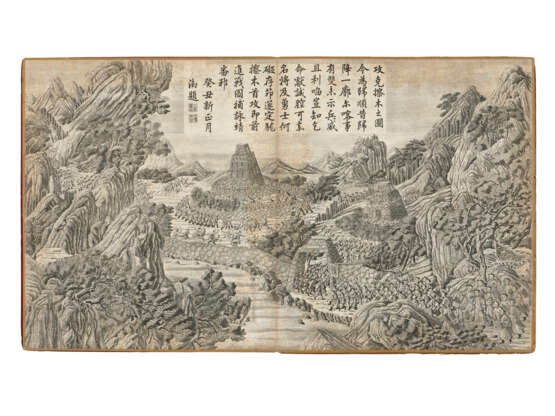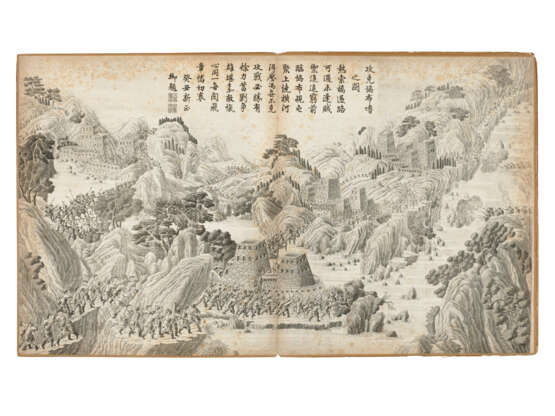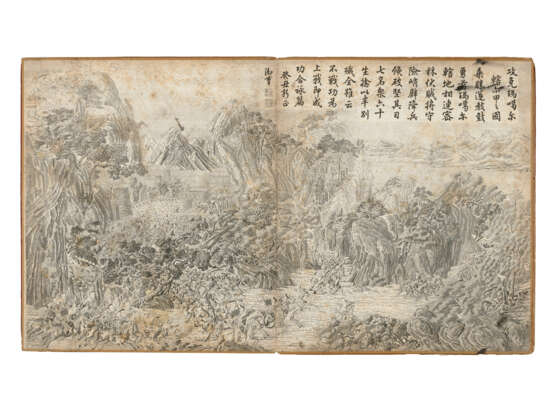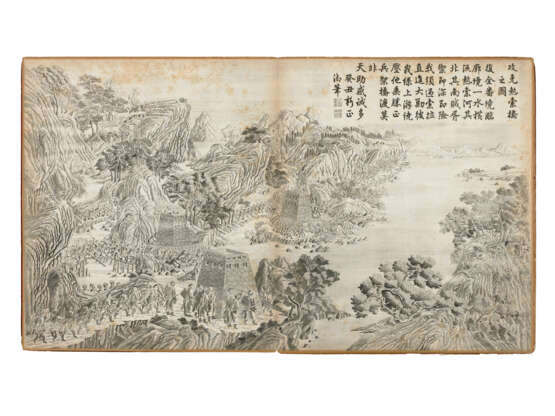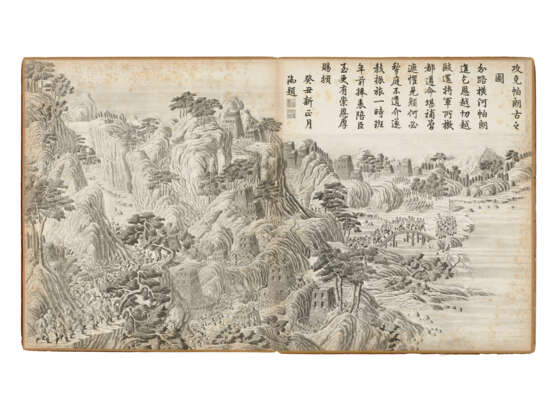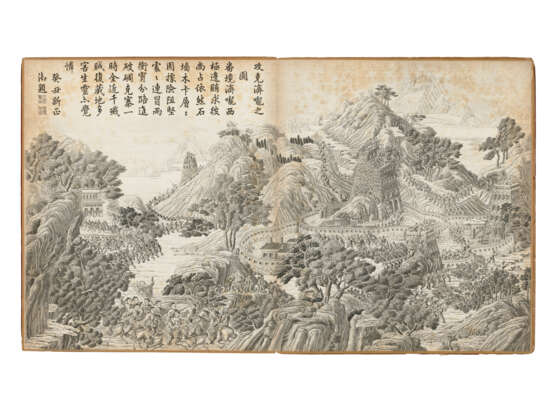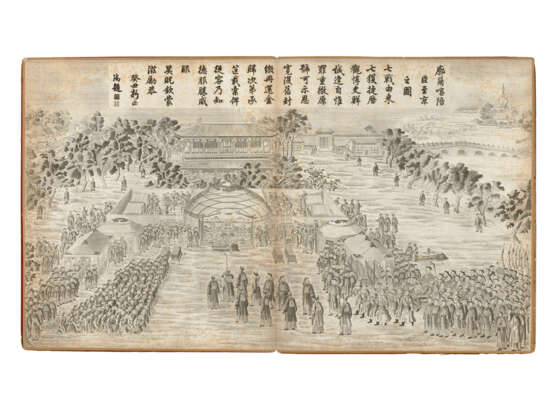ID 992767
Lot 40 | QIANLONG, Emperor of China (1711-1799) – Shiqiu JIA, Ming LI, and others
Valeur estimée
£ 80 000 – 120 000
Ping ding Kuoerke zhan tu (Pictures of the campaigns against the Gurkhas). [Beijing: c. 1793-1796].
Extremely rare set of the Qianlong battle prints utilising a Sino-European artistic aesthetic to commemorate the Chinese victories over the Nepalese Gurkhas in the Sino-Nepalese War (1788-1792).
First Chinese edition, comprising 8 engravings with printed Chinese inscriptions (each approx. 510 x 880mm), folded in the middle and bound in a red silk square folio album (worn, some silk loose).
A trade dispute, ostensibly over a debased currency of coins minted in Nepal for use in Tibet, created the conditions for a Nepalese invasion of Tibet in 1788. The Qing court, sensitive to the stability of Tibet, sent a force to monitor the situation, but did not intervene because the Nepalese and Tibetans reached an accord with the Treaty of Kerung, which included Nepal withdrawing from conquered territory and Tibet paying tribute. However, the Tibetans refused to pay their tribute, and the war continued in 1791 with a further Nepalese invasion.
This time, General Fukang'an was dispatched from Beijing with 10,000 soldiers. In a military masterstroke, he decided to enter Tibet from Xining in the north, thus shortening the march, but crossing high mountain passes in deep snow and cold in the depths of winter. Nonetheless, Fukang'an’s force reached Lhasa within sixty days, traversing nearly two thousand kilometres. By the summer of 1792 Fukang'an had won a decisive series of encounters against the Gurkha armies, but then he endured a considerable setback when his army tried to cross a monsoon-flooded Betrawati. In September, the Nepalese successfully counterattacked, and eventually a military stalemate set in, partly because the Nepalese were facing incursions from other neighbouring states on other fronts. Eventually a peace treaty was signed, the terms of which were favourable to the Qing as they retained control of Tibet, and although Nepal retained its autonomy, they were forced to pay tribute to the Qing dynasty every five years.
Continuing the tradition of commemorating his military campaigns, Emperor Qianlong once again commissioned similar prints to those made of his other military campaigns. Like the Taiwan prints (see previous lot), the scenes in the present lot were designed by Jia Quan and Li Ming, who were used to working in the Jesuit tradition. So although the production is wholly Chinese in origin and execution, western engraving techniques were employed.
The plates depict seven military victories and the ceremony concluding hostilities. The tops of the prints bear calligraphic poems composed and written by the Qianlong Emperor and dated 1793. This series was the last such suite of plates to be published in this manner. Fuchs (1939) cites an inventory of the imperial palace in Beijing (Tsao-pan-ch'u t'u-mu, p. 48) that records 11 copies of the engravings and a drawing, the latter with an inscription crediting the artists. According to the inscription, the preliminary design was prepared by Chia Shih-ch'iu, the drawing was made by Li Ming and completed by Feng Ning. The title has been taken from W. Fuchs, ‘Die Schlachtenbilder aus Turkesten’ in Monumenta Serica, 4/1 (1939), p. 121.
Special notice
No VAT is payable on the hammer price or the buyer's premium for this lot. Please see the VAT Symbols and Explanation section of the Conditions of Sale for further information
| Lieu d'origine: | Chine, Asie de l'Est, Asie |
|---|---|
| Catégorie: | Impressions d'art |
| Lieu d'origine: | Chine, Asie de l'Est, Asie |
|---|---|
| Catégorie: | Impressions d'art |
| Adresse de l'enchère |
CHRISTIE'S 8 King Street, St. James's SW1Y 6QT London Royaume-Uni | |
|---|---|---|
| Aperçu |
| |
| Téléphone | +44 (0)20 7839 9060 | |
| Commission | see on Website | |
| Conditions d'utilisation | Conditions d'utilisation |

